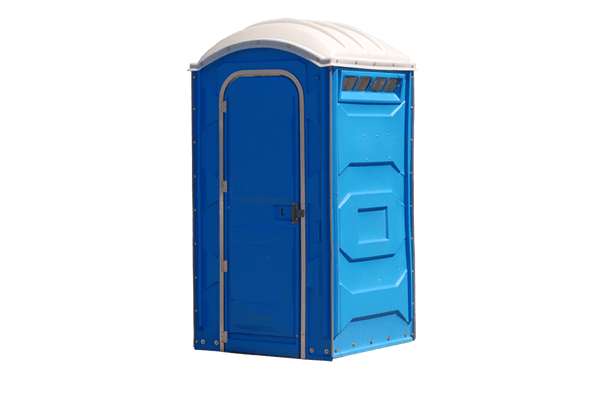Standard Porta Potty

AFFORDABLE
PORTA POTTY RENTAL
We rent porta potties for events and construction projects in the greater Briarcliff Manor area.


Are you looking to rent a porta potty in or around Briarcliff Manor New York? If you are, look no further than Yonkers Porta Potty Rental. We provide fast and professional service, pick up, drop off. Our staff are always happy to help you figure out what best fits your needs while providing a FREE No Obligation Quote! (914) 502-3237




A porta potty is basically a single unit toilet that is designed to provide convenience and privacy for the user. They come with toilet paper dispensers, sinks and hand washing areas, and other amenities such as a ventilator depending on the price. A porta potty rental is vital to your event. It does not matter how good the food is or how breathtaking the decor turns out. Even if you invite the best artists to your event, it can all turn into a disaster if you do not provide this essential structure, a portable restroom! It should be on your budget for the event, no matter how small the event. What are the common types of porta potties to consider?
Give us a call today for your FREE Porta Potty Rental Quote! One of our friendly staff members would be happy to help you.
Please have your location or zip code on hand, this will help us get your the most accurate quote and availability.
Getting a Portable Toilet Rental quote has never been so easy. Simply give us a call and have your dates and zip code ready.
These porta potties come with normal features such as: wood floor, a seat, and a waste disposal system. They are ideal for any outdoor and indoor events.
Portable toilets are easily accessible in many different sizes and shapes. You can choose one that is either large or small depending on the number of people you will invite for your event.
This type of portable toilet comes with additional features such as: a window for ventilation, a sink with running water, air conditioning systems and flushable toilet paper. If you want to add comfort to your guests, this is the type of portable toilet to use.
These are portable toilets that have larger openings. The main objective of these toilets is to make it more accessible for those who cannot use regular porta potties due to their physical challenges or just because they prefer being different from other people.
Handwashing station rentals are an indispensable asset for maintaining cleanliness and promoting public health at events, job sites, and beyond.
These porta potties come with additional features such as: flat-screen TV, refrigerator, water cooler, microwave oven and an electric kettle. If you want to liven up your party and make it more enjoyable, then this porta potty rental is the best option for you.



Anyone is able to rent a porta potty as long as you have a location that is accessible for us to leave the unit. We are happy to answer any questions you may have about renting a porta potty, simply call us at (914) 502-3237
You are able to rent a portable toilet for as long as you need. The rental duration for a porta potty in Briarcliff Manor is typically one month but you can rent it for as little as a day as long as our schedule permits pick up and drop off.
There are many situations where you may need to rent a porta potty. A few examples would be; an outdoor event, wedding, large family gathering, home remodel, construction sites etc. Any place that you may need to use the bathroom and either don’t have one available or will have to many people for a single bathroom a porta potty is a great solution.
Porta potties are typically serviced once per week. This will be sufficient in most cases but if you have a large number of people using the portable toilet you may need more regular cleanings. For example at a busy construction site. If you need more regular serving of the porta potty please contact our team, we would be more than happy to find a cleaning solution that fits your needs.
A standard porta potty rental usually includes a single unit with a toilet, urinal, and toilet paper dispenser. Some units may also include a sink with running water and a hand sanitizer dispenser. Delivery, weekly cleanings & pickup of the unit may also be included in the rental price. Make sure to ask your customer service representative.
It’s typically recommended to reserve your porta potty at least 1-2 months in advance before the delivery date. However, if you’re planning a large event or during peak season, such as summer months, or are reserving a luxury trailer unit it’s best to reserve as early as possible to ensure you get the number of units you need.

Briarcliff Manor, New York, is an idyllic village nestled in northern Westchester County, about 30 miles north of Manhattan. Set beside the Hudson River and bordered by rolling hills and wooded greenery, it offers upscale suburban elegance while maintaining a warm, village‐centered spirit. The blend of beautiful landscapes, historic charm, strong schools, and civic pride makes Briarcliff Manor one of the region’s most beloved communities.
The village traces its origins to 1902, when Walter W. Law—an English immigrant and successful businessman—began buying land to create a gracious residential enclave. His vision shaped Briarcliff’s layout. He laid out winding streets, landscaped parks, and major communal landmarks. His legacy endures in places like Law Park, the Clock Tower, and the Briarcliff Lodge ruins—once a grand resort that has since become a local landmark and is now being reimagined for modern use.
Architecturally, Briarcliff Manor is a tapestry of styles. Early 20th-century homes—Colonial Revival, Tudor, Arts & Crafts—sit alongside elegant Victorian and Shingle-style residences. In more recent decades, tasteful modern infill and sympathetic restorations have kept the village’s character intact. Street-level details like stone walls, mature shade trees, and stone-paved sidewalks reinforce an old‑world ambiance.
At the heart of Briarcliff Manor is Scarborough, a hamlet that lies along the Hudson River. It combines parkland, riverfront trails, and historic residences. Scarborough’s charming commercial strip, anchored by a few restaurants, bakeries, and essential shops, serves locals and visitors alike. Nearby, Scarborough Metro-North station connects commuters to Manhattan in under an hour, making village life commuter‑friendly without losing a sense of retreat.
Briarcliff’s layout is centered around its downtown district—a cluster of family‑owned shops, cafés, and service businesses anchored by the village hall, library, and historic fire station. Seasonal farmers markets, community fundraisers, and holiday events bring neighbors out in force to bridge social connection with small‑town charm.
Education is a central pillar of the community. The Briarcliff Manor Union Free School District is highly rated, offering K–12 instruction with strong academic, musical, and athletic programs. Students participate in arts, STEM, and community‑service initiatives, and the high school is a hub for concerts, plays, and sports competitions. The district’s reputation draws families seeking small‑scale, high‑quality public education.
Parks and recreation play a big role. Law Park, perched above the river, offers lawn and shade seating, playgrounds, waterfront paths, and panoramic Hudson River views. Nearby, Briarcliff Manor offers tennis courts, a swimming pool, athletic fields, and hiking trails through Oak Spring Woods or toward the Rockefeller State Park Preserve. These parks foster wellness, scenic adventure, and family fun throughout the seasons.
Cultural life is equally strong. The Briarcliff Manor Public Library hosts speakers, arts events, and children’s programming, while neighborhood musical groups, theater troupes, and service clubs enrich civic life. Historical societies preserve the village’s story through architecture tours and archival exhibits. The legacy of Law and other early settlers shines through in painstaking restoration of key civic buildings and cultural venues.
Economically, Briarcliff Manor is primarily residential and service-driven. Local businesses—restaurants, salons, real-estate offices, accountants, therapists—keep daily life convenient. Many residents commute to White Plains, New York City, and nearby corporate centers. Real estate prices are high compared to broader regional averages, reflecting strong demand for its desirable balance of lifestyle, school quality, civic amenities, and green space.
Demographically, the population numbers around 8,000 residents, with a median age in the 40s. Family households predominate, along with professionals, teachers, and retirees. Affluence is common, although the village tries to preserve social diversity through programs, subsidized housing, and community partnerships.
Transportation is well supported. In addition to the Metro-North station, the village is connected to the Taconic State Parkway, Saw Mill River Parkway, and arterial roads. Bike lanes and pedestrian paths are being expanded. Bus service to Scarborough complements commuter rail access.
Civic identity is strong and genuine. Volunteer fire companies, environmental clean-ups, farmers markets, tree‑planting days, and holiday parades involve hundreds of residents. Decision-making happens through a village board and committees that honor transparency and local input—reinforcing a culture of involvement and neighborliness.
The village pursues sustainability through efforts like energy-efficient public buildings, solar projects, trail conservation, and water-quality initiatives in the Hudson tributaries. A conscious aim is to preserve woodlands, historic resources, and architectural integrity while accommodating thoughtful growth.
In essence, Briarcliff Manor is a refined yet accessible suburban village with green soul, scenic breadth, and civic richness—all within striking distance of New York City. With its reverence for history, depth of community life, cultural variety, and connection to nature, it represents a rare synthesis of small-town warmth and metropolitan ambition. Whether raising a family, building a career, retiring in comfort, or simply seeking a place that “feels like home,” Briarcliff Manor delivers with grace and resilience.
Airmont | Albertson | Allendale | Alpine | Ampere | Ardsley | Ardsley-on-Hudson | Armonk | Astoria | Astoria Heights | Auburndale | Bardonia | Baxter Estates | Baychester | Bayside | Bayville | Bedford Park | Bedford-Stuyvesant | Beechhurst | Bellaire | Bellerose | Bellerose Terrace | Belleville | Bergenfield | Blauvelt | Blissville | Bloomfield | Bogerts Ranch Estates | Bogota | Briarcliff Manor | Briarwood | Bronxville | Brookdale | Brooklyn | Brooklyn Heights | Brookville | Brownsville | Bushwick | Byram | Cambria Heights | Canarsie | Carle Place | Carlstadt | Cedar Grove | Chappaqua | Chestnut Ridge | Chinatown | City Island | Cliffside Park | Clifton | Closter | Co-Op City | College Point | Congers | Corona | Cos Cob | Country Club | Coytesville | Cresskill | Croton-on-Hudson | Crown Heights | Cypress Hills | Demarest | Dobbs Ferry | Douglaston | Dumont | East Atlantic Beach | East Elmhurst | East Flatbush | East Harlem | East Hills | East Irvington | East New York | East Newark | East Norwich | East Orange | East Rutherford | East Tremont | East Village | East Williston | Eastchester | Edgewater | Elmhurst | Elmont |Elmsford | Elmwood Park | Emerson | Englewood | Englewood Cliffs |Fair Lawn | Fairview | Fieldston | Financial District | Flatbush | Floral Park | Flower Hill | Flushing | Fordham | Forest Hills | Forest Hills Gardens | Fort Lee | Franklin Lakes | Franklin Square | Fresh Meadows | Garden City | Garden City Park | Garden City South | Garfield | Glen Cove | Glen Head | Glen Oaks | Glen Ridge | Glen Rock | Glendale | Glenville | Glenwood Landing | Gramercy Park | Great Neck | Great Neck Estates | Great Neck Gardens | Great Neck Plaza | Greenburgh | Greenpoint | Greenvale | Greenville | Greenwich | Greenwich Village | Guttenberg | Hackensack | Haledon | Hamilton Beach | Harlem | Harrington Park | Harrison | Hartsdale | Hasbrouck Heights | Hastings-on-Hudson | Haverstraw | Haworth | Hawthorne | Hell’s Kitchen | Herricks | Hillcrest | Hillsdale | Hillsdale Manor | Ho-Ho-Kus | Hoboken | Hollis | Hollis Hills | Holliswood | Howard Beach | Howard Park | Hunters Point | Hunts Point | Inwood | Irvington | Jackson Heights | Jamaica | Jersey City | Kaser | Kearny | Kensington | Kew Gardens | Kew Gardens Hills | Kings Bridge | Kings Point | Lake Success | Larchmont | Lattingtown | Laurelton | Leonia | Lincoln | Lindenwood | Linwood | Little Falls | Little Ferry | Little Neck | Locust Point | Locust Valley | Lodi | Long Island City | Longwood | Lyndhurst | Mahwah | Mamaroneck | Manhasset | Manhasset Hills | Manhattan | Manorhaven | Maplewood | Maspeth | Maywood | Melrose | Middle Village | Middletown | Midland Park | Mill Neck | Millwood | Mineola | Monsey | Montclair | Montebello | Montvale | Moonachie | Morningside Heights | Morris Heights | Morris Park | Morrisania | Mott Haven | Mount Hope | Mount Ivy | Mount Pleasant | Mount Vernon | Munsey Park | Muttontown | Nanuet | New City | New Hempstead | New Hyde Park | New Milford | New Rochelle | New Square | New York City | Newark | North Arlington | North Bergen | North Caldwell | North Castle | North Haledon | North Hills | North New Hyde Park | North Pelham | North Valley Stream | North White Plains | Northvale | Norwood | Nutley | Nyack | Oakland | Oakland Gardens | Old Brookville | Old Greenwich | Old Howard Beach | Old Tappan | Old Westbury | Oradell | Orangeburg | Ossining | Oyster Bay | Ozone Park | Palisades Park | Paramus | Park Ridge | Park Slope | Parkchester | Parkside | Passaic | Paterson | Pearl River | Pelham | Pelham Bay | Pelham Manor | Pemberwick | Piermont | Plandome | Pleasantville | Pomona | Port Chester | Port Morris | Port Washington | Port Washington North | Prospect Park | Purchase | Queens | Queens Village | Ramblersville | Ramsey | Red Hook | Rego Park | Richmond Hill | Ridgefield | Ridgefield Park | Ridgeway | Ridgewood | River Edge | River Vale | Riverdale | Riverside | Rivervale | Rochelle Park | Roosevelt Island | Rosedale | Roslyn | Roslyn Estates | Roslyn Heights | Rutherford | Rye | Rye Brook | Saddle Brook | Saddle River | Saint Albans | Sands Point | Scarborough | Scarsdale | Schuylerville | Sea Cliff | Searingtown | Secaucus | Silver Beach | Singac | Sleepy Hollow | South Floral Park | South Hackensack | South Nyack | South Ozone Park | Sparkill | Sparta | Spring Valley | Springfield Gardens | Spuyten Duyvil | Steinway | Stewart Manor | Suffern | Sunnyside | Sunnyside Gardens | Tappan | Tarrytown | Teaneck | Tenafly | Terrace Heights | The Bronx | Thomaston | Thornwood | Throgs Neck | Tompkins Corners | Totowa | Tremont | Tuckahoe| Tudor Village | Union City | Unionport | University Gardens | University Heights | Upper Brookville | Upper East Side | Upper Montclair | Upper Nyack | Upper Saddle River | Upper West Side | Utopia | Valhalla | Valley Cottage | Van Nest | Verona | Villa Marie Claire | Viola | Wakefield | Waldwick | Wallington | Warren Point | Washington Heights | Waverly | Wayne | Weehawken | Wesley Hills | West Farms | West Haverstraw | West New York | West Nyack | Westwood | White Plains | Whitestone | Williamsburg | Williston Park | Wood-Ridge | Woodcliff Lake | Woodhaven | Woodland Park | Woodlawn | Woodside | Worthington | Wyckoff | Wykagyl | Yonkers | Yorkville

Monday: 7am – 7pm
Tuesday: 7am – 7pm
Wednesday: 7am – 7pm
Thursday: 7am – 7pm
Friday: 7am – 7pm
Saturday: 7am – 7pm
Sunday: Closed
© 2025 Yonkers Porta Potty.
